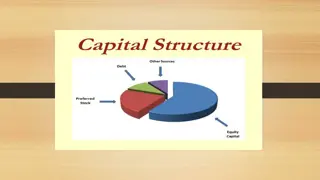The Curious Case of Capital Accumulation Plans
This content delves into the reasons behind the overtaking of traditional defined benefit plans by Capital Accumulation Plans (CAPs), the regulatory framework surrounding CAPs, potential legal issues, and steps needed to improve CAPs to prevent future retirees from facing financial challenges.
Download Presentation

Please find below an Image/Link to download the presentation.
The content on the website is provided AS IS for your information and personal use only. It may not be sold, licensed, or shared on other websites without obtaining consent from the author.If you encounter any issues during the download, it is possible that the publisher has removed the file from their server.
You are allowed to download the files provided on this website for personal or commercial use, subject to the condition that they are used lawfully. All files are the property of their respective owners.
The content on the website is provided AS IS for your information and personal use only. It may not be sold, licensed, or shared on other websites without obtaining consent from the author.
E N D
Presentation Transcript
The Curious Case of Capital Accumulation Plans C1053401
Why did CAPs overtake the traditional defined benefit plan? How are CAPS regulated? Potential legal issues associated with CAPs Issues created by the CAP lifecycle Coming to terms with the reality of CAPs What does the legal future hold for CAPs?
Not overregulation or bad case law Uncertainty about cost, and in particular, unknown liability associated with future obligations DB plans not invested in a way that matched assets and liabilities Volatility and uncertainty led to demise of DB plans
Pension legislation does not deal with them in any detail which is curious given the prevalence of CAPS CAPSA Guidelines 3 and 8 set out some best practices Following Guidelines will not insulate from liabilities Guidelines exist within existing legislative and common law environment
CAP Sponsor/CAP Member relationship is a fiduciary relationship Duties are owed to CAP members by CAP sponsors How are they discharged? Design (e.g. inadequate contribution levels, investment options, fees) Education vs advice
How is the plan communicated to CAP members (retirement, retirement assistance or savings plan?) Are CAP member demographics understood? Do they need to be? In light of demographics, what steps need to be taken?
CAPs are not going away We need to make them better Increased contribution levels and legislation around options, investment advice, maintaining CAP participation after retirement are some examples of needed steps CAP Sponsor and member action on fees
Unless action is taken, CAP retirees will retire into poverty This will place a burden on society as a whole This will also give rise to litigation and will likely result in employers paying the cost of certainty in contributions in a different way There is need to accept the reality of CAPS and to work to make them better























